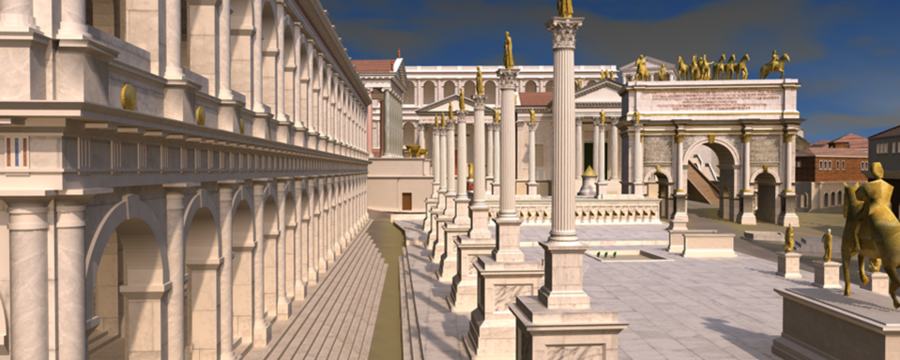What Are the Different Types of Housing in Ancient Rome?

Share this step
As in almost any city, there were marked differences between the housing of the rich and the poor in ancient Rome.
There was a huge gulf between the emperors in their marble halls on the Palatine and the occupants of cheap, top-floor apartments. Lower down the scale again were slaves – though a slave in a rich household might enjoy better accommodation than the very poorest free Roman, unable to afford any sort of housing. Here the fourth-century AD historian Ammianus Marcellinus records that some of the city’s homeless sought night-time shelter under the awnings that shaded Rome’s theatre-goers from the day-time sun in some of the splendid entertainment buildings we will encounter next week:
… of the multitude of lowest class and greatest poverty, some spend the entire night in wineshops, and many sleep under the awnings of the theatresAmmianus Marcellinus, 14.6.25.
Figure 1: Highlighted is a row of three atrium houses. A good example of a mixed district in Rome, flanking a major road in the valley. © Dr Matthew Nicholls, University of Reading
The very extent of the city and the limitless number of inhabitants causes a need for huge numbers of dwellings. Since a low-rise area could not accommodate such a multitude in the city, the circumstances forced us to turn to making buildings taller.Vitruvius, On Architecture 2.17
We inhabit a City that’s held up, for the most part, by thin props. That’s how the landlord’s manager props up collapsing buildings. Once he’s covered up a longstanding, gaping crack he tells us to sleep safe in a tottering ruin. It’s best to live where there’s no fire, no night-time panic. [Your neighbour] Ucalegon is already calling for water, and moving out his few belongings, and already your third floor is starting to smoke: you’re unaware – for if the alarm spreads up the stairwell from the bottom, he’ll be the last to burn who only has the roof tiles between himself and the rain, where the gentle doves find a place for their eggs… … You have to be very rich to sleep well in this City.Juvenal, Satire 3, 193.203, 235.
The cheeky shopkeepers had appropriated the entire city: no threshold kept within its own limits.
You, Caesar, bade the narrow lanes widen,
and what had recently been an alleyway was made into a proper thoroughfare.
No column is now encircled with chained-up wine jars,
nor does the magistrate have to wade through the mud in the middle of the street. The barber’s razor is no longer drawn blindly in the midst of a large crowd, the grimy eating house doesn’t occupy the whole street. Barber, barman, cook, butcher – they all keep behind their own thresholds. Now it’s Rome! Before it was one giant shop.Martial, Epigram 7.61
Share this
Rome: A Virtual Tour of the Ancient City


Reach your personal and professional goals
Unlock access to hundreds of expert online courses and degrees from top universities and educators to gain accredited qualifications and professional CV-building certificates.
Join over 18 million learners to launch, switch or build upon your career, all at your own pace, across a wide range of topic areas.
Register to receive updates
-
Create an account to receive our newsletter, course recommendations and promotions.
Register for free







